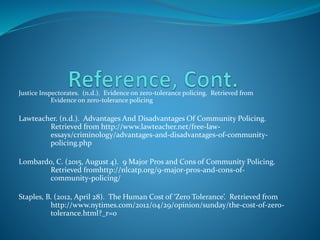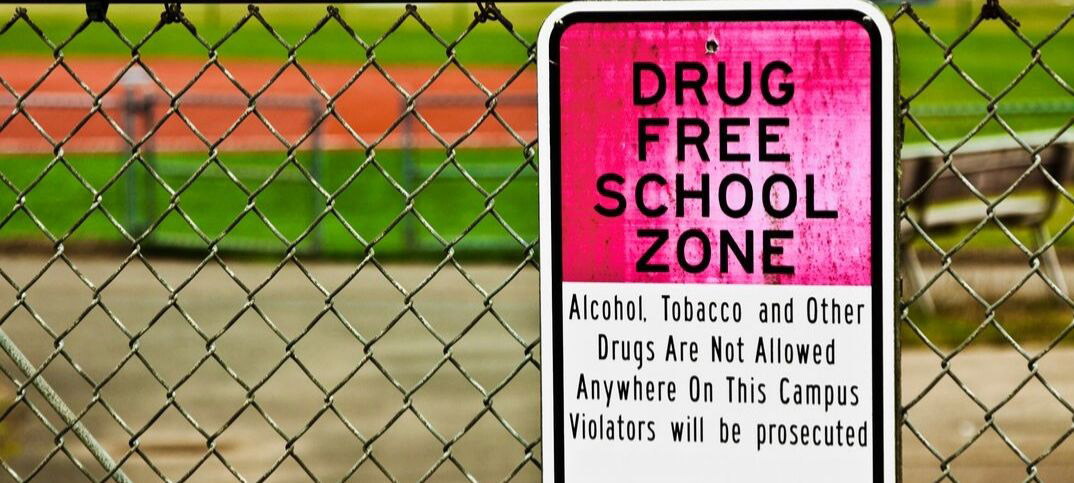Zero tolerance policing is a law enforcement strategy that involves strict and uncompromising enforcement of laws, particularly in regards to minor offenses. This approach aims to create a safer and more orderly society by deterring crime through the threat of harsh penalties. While zero tolerance policing has been praised for its effectiveness in reducing crime and promoting public safety, it has also been criticized for its potential to disproportionately impact marginalized communities and for its potential to erode trust between law enforcement and the public.
One of the main advantages of zero tolerance policing is its effectiveness in reducing crime. By strictly enforcing laws and imposing severe penalties for even minor offenses, zero tolerance policing can deter people from committing crimes in the first place. This approach can be particularly effective in reducing low-level offenses such as drug possession, public intoxication, and disorderly conduct, which can create a sense of disorder in a community and lead to more serious crimes. Zero tolerance policing can also be effective in creating a safer environment for the public, as it sends a strong message that crime will not be tolerated and that law enforcement is actively working to prevent it.
However, zero tolerance policing has also been criticized for its potential to disproportionately impact marginalized communities. For example, research has shown that zero tolerance policing can lead to increased arrests and incarceration rates for people of color, particularly Black and Latino communities. This can perpetuate cycles of poverty and discrimination, as individuals who are arrested and incarcerated may face difficulties finding employment and housing upon release. Moreover, zero tolerance policing can also lead to increased instances of police brutality and abuse of power, as officers may feel justified in using excessive force in order to enforce laws.
Another disadvantage of zero tolerance policing is its potential to erode trust between law enforcement and the public. When law enforcement focuses on strict and uncompromising enforcement of laws, it can create a sense of fear and mistrust among community members, particularly those who may feel targeted or unfairly treated by police. This can lead to a breakdown in communication and cooperation between law enforcement and the community, which can make it more difficult to address and solve crimes.
Overall, while zero tolerance policing can be effective in reducing crime and promoting public safety, it is important to carefully consider the potential consequences of this approach. It may be necessary to balance the benefits of zero tolerance policing with the need to protect marginalized communities and maintain trust between law enforcement and the public.
Pros and cons of zero tolerance policing Free Essays

People will fear to be punished in future and conduct themselves accordingly. The exercises help in the creation of awareness about the presence of the police because more police officers keep on patrolling. In theory, this sounds good, but in practice, it is full of imperfections and inequity. In this experiment, the levels of uniformed patrols were varied to test their relative effect on reported crime and citizen perceptions, but patrol officers were not instructed to take any special enforcement actions Kelling, et al. Officers used an undercover, reverse-sting operation, arresting buyers for solicitation.
Pros And Cons Of Zero Tolerance Policing

Finally, this approach requires regular and accurate monitoring of burglary trends as an early warning system so that the start of any decay in impact can be spotted and acted upon by a re-application of the initial crackdown, which would then be followed by further consolidation work. One of the problems with zero-tolerance policies is that employers ignore all the good work an employee has done. A zero tolerance policy is not always effective, because educators and disciplinarians do not always agree about what actually constitutes a weapon. But see Weiss and Freels 1996 for a contrary finding that aggressive traffic enforcement produced no reduction in robbery or auto theft. Losen, The Color of Inadequate School Resources: Challenging Racial Inequities that Contribute to Low Graduation Rates and High Risk for Incarceration, 38 Clearinghouse re. For example, when I first began teaching, I worked in a classroom for children with behavioral impairments.
Zero Tolerance Policies in K

Most of the crackdowns reported in the research literature are reasonably well-planned, coordinated, and focused: they must be to justify the research. However, there is a gap in the literature that addresses the magnitude of how minority girls are impacted by these policies. Conclusion Zero tolerance policies were created to prevent school shootings because they gave school districts some leverage in sending home students caught with a deadly weapon on campus. The consequences given to students are usually harsh, involving either suspension or expulsion, and it can sometimes be for misconduct issues that are relatively minor. Everyone who carries marijuana cannot be arrested so in reality certain vulnerable groups, usually ethnic minorities, are targeted and labelled as criminals. The commander also outlines the plans for the future regarding the vision and mission of the organization.
Zero Tolerance and Aggressive Policing (And Why To Avoid It) In Depth

Those who applied and were eligible were put on drug court probation. Some users left the area altogether. A custodial sentence, particularly for juveniles, takes them out of the atmosphere often surrounded by drug use and living in poverty and or abusive homes that encourage criminality. Without proper planning and supervision, crackdowns hold the potential for abuse of police authority. The teacher was waiting to receive an email from the nurse to determine what should be done. Heroin users made nervous by crackdowns might rush intravenous drug use; use unclean needles; use the drug in remote places where they might not be found if they overdose; hide the drug in body cavities, increasing the risk of accidental overdose or infection; and more carelessly discard used syringes. Given the frequency and expense of crackdowns, the research is quite limited.
Zero Tolerance Policy in Schools Pros and Cons

Should Pipeline Be Allowed In Schools 720 Words 3 Pages The school to prison pipeline is an organized nationwide system consisting of local, state and federal education. Often, crackdowns help reduce problems to more manageable levels, which gives longer-term responses a better chance to take hold. Then the investigation is made to understand and gather enough information related to the case. Hewitt, The School-to-Prison Pipeline: Structuring Legal Reform, New York University Press 2010 at 34 citing Daniel J. The programs help in enhancing togetherness in the community and prevent crimes within a community. He is devastated because he gave up his job to attend school and stated he will drop out.






